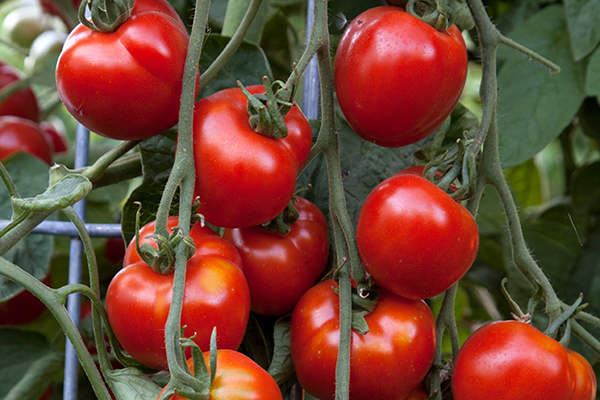
By Betty Beeman

According to the National Gardening Association, tomatoes are the most popular vegetable among backyard gardeners.
According to a 2014 survey, one in three American households has a vegetable garden and nearly 9 in 10 of those gardens include tomatoes. Nothing tastes as good as a ripe, home-grown tomato.
There are thousands of tomato varieties, but all fall into a few broad categories:
1. Cherry tomatoes, such as Sun Gold, or Sweet Millions, have a sweet-tart tomato flavor and are great for salads and snacking on whole. Because the fruit is small, these are the first to mature.
2. Sauce tomatoes, such as Opalka, San Marzano or Grandma Mary’s Paste, have a rich flavor and much lower water content than other varieties. They are the best ones for spaghetti sauce.
3. Beefsteak tomatoes, such as Cherokee Chocolate, Brandywine or Homestead, have the biggest fruit and the greatest range of flavor and form. They are commonly sliced for sandwiches or cut up and added to salads, though the best varieties can be eaten like an apple.[quote_box_right]MARCH TIPS: Plant seeds now for beets, carrots, sweet corn, cucumbers, cantaloupe, watermelon, green onions, spinach and sunflowers.[/quote_box_right]
There are also many all-purpose tomato varieties that have traits from each category. Most of the round tennis ball-size tomatoes at the supermarket would be classed as all-purpose. These are usually modern hybrids that rarely match the complex flavor – and diverse appearances – of heirloom tomatoes.
Tomatoes grow best in moist soil and when the temperatures remain steadily in the 70 to 80 degree range. Our spring season is short, 60 to70 days for the optimal temperatures between 50 to 90 degrees.
Consider mixing peat moss into the soil to improve drainage. Prepare soil by digging down two feet. The hole needs to be deep enough that you can plant your transplant where only the top quarter of the plant will be sticking out of the ground.
Carefully take transplants out of pots and try not to disturb the roots during the transplanting process.
Mix native soil with equal amounts of peat or potting soil. Place a scoop of compost in the bottom of the hole. This will give your plant an extra boost and keep the plant from going into shock from transplanting. Fill in with garden mix and native soil, pat soil gently around tomato to firm. Water thoroughly.
To avoid the dreaded blossom end rot, be sure to keep the soil consistently moist and avoid letting the soil dry out. As the temperatures heat you should consider using a shade cloth over tomatoes.
Tomatoes are heavy feeders. Use Starter solution for transplants. Side dress 1-2 weeks before the first tomatoes ripen with 1½ ounces 33-0-0 per 10 foot row. Side dress again two weeks after the first ripe tomato with a balanced fertilizer such as 5-10-5. Repeat one month later.
Check out YouTube “Growing a Tomato Plant in the Desert” also “Desert Gardening with Carol Stuttard” (Master Gardener from Scottsdale) for more information.
Questions?
Contact a Master Gardener volunteer
520-374-6263
[email protected]
MAC-Pinal-MasterGardener.org
This column appears in the March issue of InMaricopa.













![Alleged car thief released without charges Phoenix police stop a stolen vehicle on April 20, 2024. [Facebook]](https://www.inmaricopa.com/wp-content/uploads/2024/04/IMG_5040-218x150.jpg)

![Maricopa’s ‘TikTok Rizz Party,’ explained One of several flyers for a "TikTok rizz party" is taped to a door in the Maricopa Business Center along Honeycutt Road on April 23, 2024. [Monica D. Spencer]](https://www.inmaricopa.com/wp-content/uploads/2024/04/spencer-042324-tiktok-rizz-party-flyer-web-100x70.jpg)

